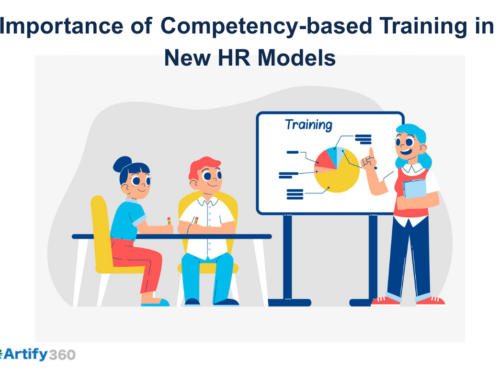Making informed decisions is the key to success in the ever-evolving business landscape. Your human resources data is a goldmine of insights, but unlocking them efficiently is challenging. Enter HR Software, a robust solution for your HR reporting needs.
In this article, we’ll delve into how HR software simplifies the process of creating HR reports, helping you harness the full potential of your data. Discover how this user-friendly software empowers your business to transform information into actionable strategies, enhancing HR management and driving growth.
What are HR reports?
HR reports are the compass that guides a company through the often intricate terrain of human resources. In their essence, HR reports are a collection of data-driven insights that provide a comprehensive snapshot of various HR activities within an organization. They can cover various areas, including recruitment, employee performance, retention, payroll, compliance, etc.
These reports are crafted to help businesses understand and assess their workforce, HR processes, and overall performance. HR reports offer actionable insights by scrutinizing data on aspects like employee demographics, training, attendance, or turnover rates. For instance, they can reveal patterns in employee productivity, highlight areas that require improvement, or even forecast future HR needs.
HR reports serve a dual purpose: they aid in decision-making by providing data-backed information to HR professionals, managers, and executives, and they also facilitate transparency and communication across the organization.
The beauty of HR reports lies in their versatility. They can take the form of charts, graphs, tables, or written documents, depending on the type of data and the intended audience. Whether it’s a visual representation of turnover rates or a detailed analysis of recruitment efforts, these reports are the compass that guides businesses in their journey toward better HR management and, consequently, overall success.
Types of HR reports
HR reports come in various types, each catering to a specific aspect of human resources management. These reports are vital tools that help organizations navigate their HR landscape effectively. Let’s explore some common types of HR reports:
- Employee information reports:
These reports provide a comprehensive overview of your workforce. They encompass data like employee demographics, contact information, job roles, and seniority levels. Employee information reports are fundamental for understanding the composition of your workforce, aiding in decision-making processes like hiring, promotions, and diversity initiatives.
- Onboarding reports:
Onboarding reports focus on the early stages of an employee’s journey with the company. They track the onboarding process, measuring how quickly new hires adapt to their roles and the organization’s culture. These reports assist in refining the onboarding experience, ensuring that new employees integrate seamlessly into the company.
- Recruitment reports:
Recruitment reports are a treasure trove of insights into your hiring process. They track data related to job postings, applicant sources, candidate demographics, and the time it takes to fill positions. This valuable information guides your recruitment strategy, enabling you to optimize your hiring efforts and reduce time-to-fill rates.
- Performance reports:
Performance reports delve into employee productivity, highlighting areas of success and areas needing improvement. They often include data on key performance indicators (KPIs), employee goals, and progress over time. Managers and HR professionals rely on these reports to evaluate performance and recognize high-performing individuals.
- Payroll reports:
Payroll reports are an essential part of your organization’s financial management. These reports detail each employee’s salary information, tax deductions, and benefits allocations. They are indispensable for payroll processing, ensuring that employees are compensated accurately and that the company complies with tax regulations.
These HR reports can vary in form, from visual presentations with charts and graphs to written documents containing detailed analyses. The choice of report type depends on the specific needs of your organization and the type of data you want to convey. By leveraging these reports effectively, you can streamline HR processes, make informed decisions, and foster a more productive and engaged workforce.
Benefits of HR reports for an organization
HR reports are not just documents filled with data but powerful tools that can drive better decision-making, efficiency, and organizational growth. Let’s delve into the significant benefits they bring to your organization:
- Recognize organizational flaws:
HR reports provide a magnifying glass for examining your organization’s operations. You can pinpoint areas needing improvement by scrutinizing employee performance data, turnover rates, and other vital metrics.
Whether it’s a department with consistently high turnover or a decline in productivity, HR reports help you recognize flaws early on. Identifying these issues allows you to take corrective action and prevent them from evolving into major problems.
- Formulate effective plans:
With HR reports at your disposal, strategic planning becomes more data-driven and precise. You can use insights from reports to formulate effective plans for various aspects of HR management.
For example, suppose the data indicates that specific teams are struggling with meeting performance goals. In that case, you can develop targeted training programs or initiatives to address these issues. This enables you to allocate resources efficiently, improving the overall effectiveness of your HR strategies.
- Easily track performance:
HR reports offer a comprehensive view of employee performance. Whether you’re evaluating individual contributions or departmental achievements, these reports make it easy to track progress.
Monitoring performance through HR reports allows you to recognize high-performing employees, identify areas for improvement, and make data-driven decisions about promotions and raises.
- Predict hiring needs:
Predictive HR analytics is a valuable feature of HR reports. You can make informed predictions about your organization’s future staffing needs by analyzing historical data on hiring trends, turnover rates, and workforce growth.
This proactive approach helps you stay ahead of recruitment demands, ensuring you have the right talent to support your business goals. It also prevents the rush to hire in response to sudden vacancies, which can lead to suboptimal hiring decisions.
- Analyze the source of company issues:
HR reports highlight problems and help you dig deeper to find their source. For example, suppose you notice a spike in employee turnover. In that case, HR reports can reveal if it’s concentrated in a specific department or linked to certain managerial practices.
Identifying the source of such issues allows you to take targeted actions to resolve them. Whether addressing management concerns, restructuring teams, or implementing employee retention programs, HR reports provide the data-driven insights needed to tackle problems at their root.
HR reports are indispensable for organizations striving for excellence in HR management. These reports offer a panoramic view of your workforce, allowing you to recognize areas needing improvement, formulate effective strategies, track performance, predict hiring needs, and analyze the sources of company issues.
By harnessing the power of HR reports, your organization can make well-informed decisions, enhance productivity, and create a workplace that attracts and retains top talent.
Streamline your HR reports with Artify360
Artify360 HR software is your ultimate solution for precise HR reporting needs. Our robust reporting module simplifies generating essential HR reports for your organization.
With Artify360, you can effortlessly create detailed reports that provide valuable insights into various aspects of your workforce. Whether you need to track employee performance, analyze turnover rates, or forecast hiring needs, our reporting module has you covered.
The user-friendly interface ensures you can quickly generate these reports without a tech expert. Plus, the reports are designed to be easily understood, making the data accessible to HR professionals at all levels.
Artify360 HR software’s reporting module is your key to making informed decisions, addressing HR challenges, and driving organizational growth. It’s time to transform your HR management with precise, data-driven insights – and Artify360 is here to help you do just that.






